In general, fig trees, Ficus carica, are well-known for their preference for mild climates. But northern gardeners won’t be denied a supply of fresh backyard fruit if they grow a ‘Hardy Chicago’ variety, which can withstand fairly cold temperatures if properly cared for.
Also known as ‘Bensonhurst Purple,’ this variety produces purple-brown figs that ripen in late summer. The flavorful fruit is small to medium-sized, and is sometimes compared to the fruit of another popular fig variety, ‘Brown Turkey.’
‘Hardy Chicago’ grows 10-15 feet tall, and has a spread of 9-12 feet at maturity.
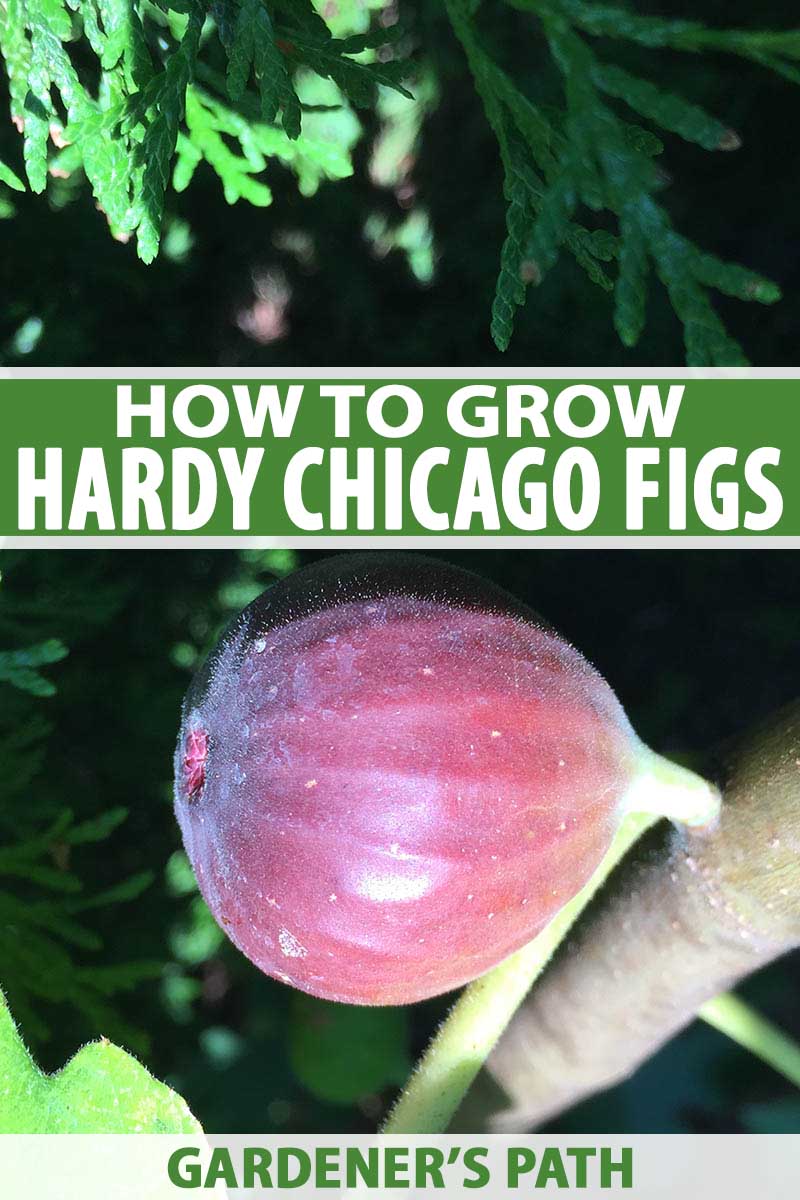
We link to vendors to help you find relevant products. If you buy from one of our links, we may earn a commission.
This fig can be grown in warmer climates, too, and it does well in USDA Hardiness Zones 5-11.
While Southern fig lovers have an abundance of choices for cultivars that do well in their areas, ‘Hardy Chicago’ is one of just a handful of fig varieties that can survive chilly climes.
Think this fig might be the one for you? Read on to get our tips for growing the ‘Hardy Chicago’ variety. Also, make sure you take a look at our fig growing guide.
What You’ll Learn
Getting Started
Site selection is important for growing ‘Hardy Chicago’ in northern areas.
Choose a location that is protected from chilly winds and will enable the tree to receive eight hours of sun per day. With its wide spread, you’ll want to be sure the spot you choose affords plenty of room for it to stretch out, too.
Figs prefer soil with a pH of 6.0 to 6.5, and the tree will reward particularly well if you incorporate some compost into the planting area.
You might want to start with a potted plant such as this one from Nature Hills Nursery.
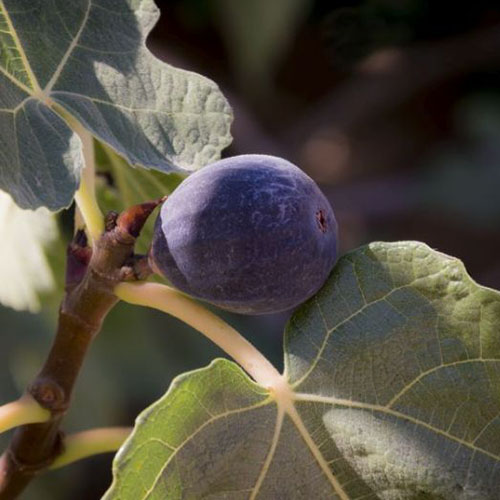
‘Hardy Chicago’ Tree from Nature Hills Nursery
You’ll receive a 2 to 3-foot tall tree ready for transplanting into the garden from Nature Hills.
Home Depot also has 12- to 18-month old plants available online.
Plan to transplant when the tree is dormant, in early spring or late fall.
After you’ve amended the soil with compost, dig a hole wide enough to accommodate the root ball, and about 2-3 inches deeper, depending on the size of your plant.
Place the root ball in the hole and backfill with the soil you pulled out.
‘Hardy Chicago’ Fig via Nature Hills Nursery
Water well and apply a thick layer of mulch such as woodchip or shredded bark, to help the soil retain moisture and reduce evaporation.
Place the mulch around the plant but make sure it’s not touching the stem. Leave a gap of 2-4 inches to prevent moisture building up around the stem that could lead to rot.
Maintenance
Continue to water your young tree twice a week for the first couple of years, until it becomes established.
After that, it’s a good idea to water every three to five days during the growing season, particularly if there is no rainfall. The goal is to keep the soil moist but not waterlogged.
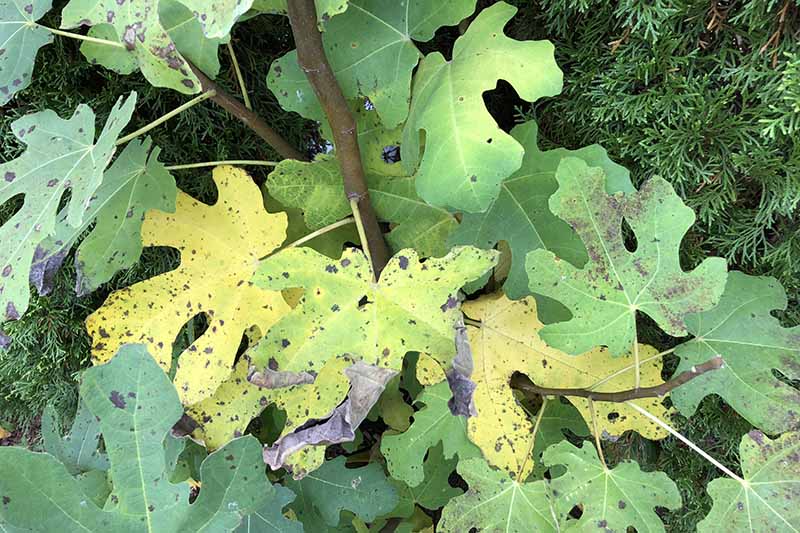
You can quit watering an established tree in the fall as it will go dormant in the winter months.
You shouldn’t need to fertilize your fig unless it is slow to develop leaves in spring, in which case you can apply a balanced slow-release fertilizer – NPK 5-5-5 should do the trick.
Alternatively, apply compost in the spring. To do this, remove the mulch and apply 1-2 inches of compost then replace the mulch over the top.

Fig trees don’t require a lot of pruning, but a snip here and there to encourage new growth – especially on older trees – isn’t a bad strategy. You’ll also want to cut away any deadwood, of course.
Pruning should be done during the winter months when the tree is dormant.
Winter Care
‘Hardy Chicago’ is among the most cold-tolerant of fig varieties; its stems are hardy down to 10°F and its roots will survive temperatures as low as -20°F.

Nevertheless, it’s good to give these trees some extra love when winter winds blow in.
For starters, mulch thickly with woodchip, shredded bark, or straw to the drip line to give the roots extra protection against the cold.
For small trees, you can wrap the branches and trunk with an insulating material, securing it with string. You can then cover the whole tree with a tarp or other waterproof material to provide additional insulation.
You might also consider building a cage around the trunk, and then filling the cage with hay, leaves, or other mulching material.
Read more about preparing fruit trees for winter here.
Takes the Cold and Keeps on Fruiting
‘Hardy Chicago’ fig trees are just the ticket for gardeners who need a tough tree that can take a brutal chill and still reward with bushels of flavorful fruit.
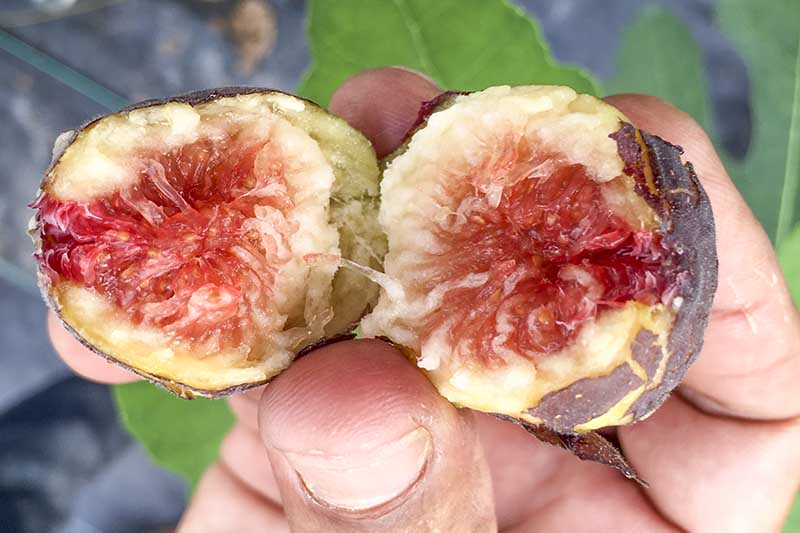
Fairly easy to grow, with minimal water and fertilization requirements once established, ‘Hardy Chicago’ figs make a lovely and nearly carefree addition to the landscape.
Have you grown this beauty? Share your tips in the comments section below.
For more information on growing fruit trees in your orchard, you’ll need these guides next:
- 7 of the Best Cold Hardy Apricot Trees
- 9 of the Best Cold Hardy Avocado Trees
- Growing Citrus Indoors: Create a Little Slice of Paradise
© Ask the Experts, LLC. ALL RIGHTS RESERVED. See our TOS for more details. Product photos via Nature Hills Nursery. Uncredited photos: Shutterstock.
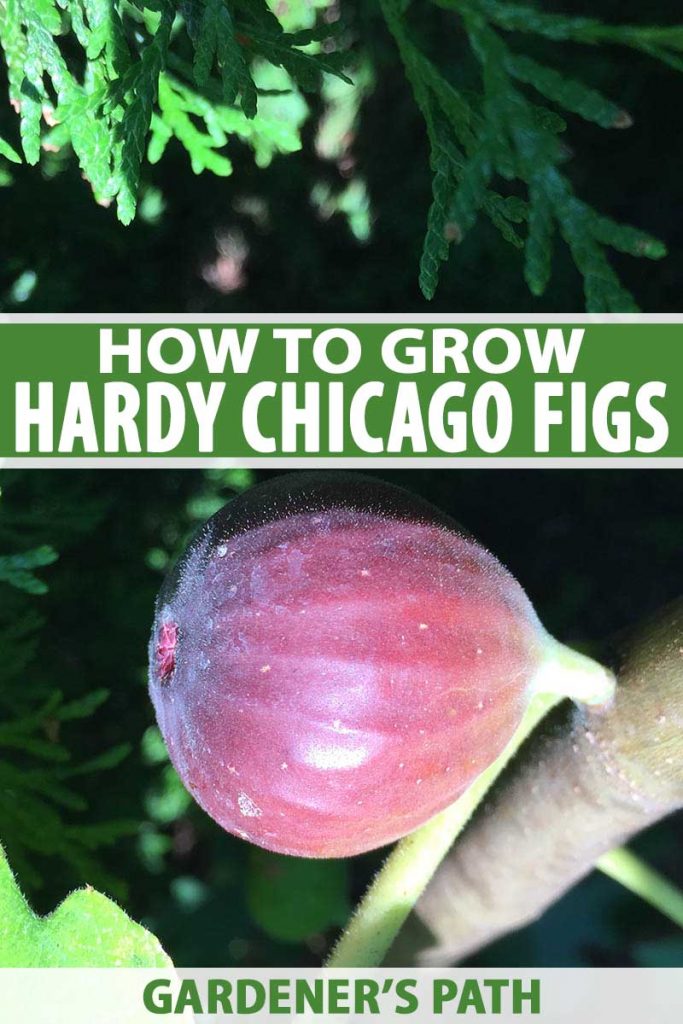
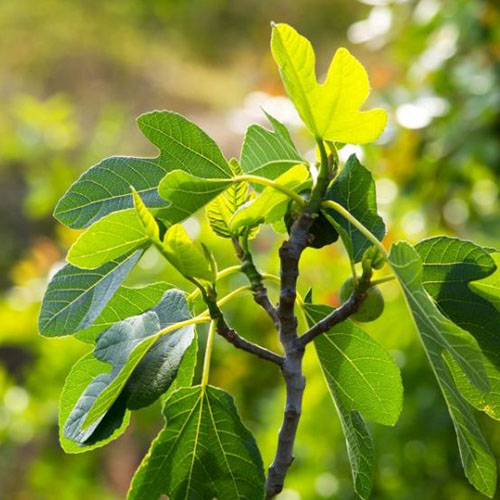
I think you may have reversed the two temperatures you listed, 10° and 20°. Seems wrong or at least backwards….
During the winter, ambient air temperatures are typically colder than the soil, and the deeper you go, the more insulated the soil is from cold weather. For these trees, stems are hardy down to a cooler temperature than what the roots are able to survive.
The temps for zone 5 are Fahrenheit….-20F for roots and 10F for branches, both are below freezing.
I placed my potted Chicago hardy fig trees outside in early Spring and we got hit with frost killing the new leaves. Did this harm the tree? what do you suggest? the temperature went down to 35 degrees.
Late frosts are the worst! Where are you located, Kim? Hopefully your tree will spring back, but it might take some time. Buds are sensitive to frost, and you might get a smaller yield of fruit this year. But as long as the damage wasn’t too severe, you should be able to restore your tree to health. This cultivar is cold hardy, but if you’re growing it outdoors in a cooler climate (or if you want to move your potted plant back outside early in the spring, like you’ve described here), keep an eye on the weather forecast, and provide… Read more »
My Chicago fig is 5 years old now I bought it as a shrub and it grows from the ground up every year but no figs. Any suggestions zone 5ab Canada . Thanks
When you say that it “grows from the ground up,” are you pruning it down to the ground? Removing the buds that have already begun to form will prevent fruit from forming the following spring.
I’m in Michigan. You need to cover your tree with old blankets (tie blankets to tree with string), then put a tarp over blankets (tie tarp to tree). Put on before 20 degrees F (night temperature) and remove after 20 degrees F in winter (lowest temperature). Tree will come back to life by June. Bigger the tree, use more blankets/towels/tarps/string. Blankets are put on tree after leaves fall in cold weather.
What size pot would you recommend if growing it outside in zone 7B? Also how big would it get?
Hi Blake, I recommend planting the tree up a pot size or two from what it’s in now, and then repotting each year as it grows. This is because sometimes when trees are planted in containers larger than they need, the soil can stay overly moist – leading to disease for the tree. At maturity you can count on potting your tree in a half whisky barrel size planter – about 2 feet across. Hardy Chicago Fig is supposed to get 10-15 feet tall with a 9-12 foot spread at maturity, but if grown in a container, it will probably… Read more »
I have planted a Chicago fig in a pot earlier this spring. It’s growing like a week with big beautiful leaves, however, I see another growth near the root of the tree, almost like another tree growing out of the base. Is this a sucker shoot? Should I remove it?
Yes, that sounds like a sucker! You can feel free to remove these. Keep in mind that figs bleed latex, and pruning is generally recommended in the early spring, when trees are dormant.
Can I actually plant the tree in the ground in the Chicago area and allow it to grow and not cut it down each year?
As one of the hardiest cultivars, this type can withstand winter conditions if planted in the ground in the Chicago area! Choose a sheltered location for planting, and plan to provide extra protection to keep the roots warm through the winter season.
Young tree about 3-4 feet high, in a container. Is it possible to overwater in the hot summer?
It is, particularly if your container does not have adequate drainage holes, or if the saucer holds standing water. Watering deeply as needed through periods of hot weather in the summer is certainly recommended, but you don’t want to risk drowning the roots or causing them to rot if standing water or oversaturation of the soil becomes a problem.
I’ve become obsessed with figs. I bought 2 fig plants, a yellow long neck and a Violette de Bordeaux. For the VDB, 2 small leaves dried up and fell off the first 2 days after potting, a week and a half later so did my long neck. I live in Zone 4b and it’s September but I don’t know if this has anything to do with it. Please help me keep my naked fig plants alive. How should I overwinter them? And can I put them in my indoor greenhouse cabinet I have coming in the mail? I need all… Read more »
Figs are beautiful plants to become obsessed with! Many plants don’t respond well to the stress of repotting, and they will need some time to adjust to their new location. Avoid overwatering and try to baby them a little for the time being. Placement in full sun for long periods of the day when they are young plants that have recently been repotted can stress them out as well. The average first frost in your area is usually expected somewhere between October 1st and October 15th. Keep an eye on the weather forecast, and be prepared to bring your potted… Read more »
My hardy fig’s wood dies every winter and then the roots put out new fruiting growth. I have a ton of fruit but it’s late September and it’s not ripening. The same thing happened last year. I’m in southwest PA. Any suggestions?
Has it been particularly hot in your area this summer? Many environmental factors can lead to failure of the fruit to ripen, but heat stress and a lack of water during periods of hot weather is at the top of this list. A nutrient imbalance or lack of nutrients can play a role as well, so you might want to consider having the soil tested. You might still have some luck getting ripe fruit this season! I haven’t tried this myself, but some gardeners actually recommend dabbing a bit of olive oil on the ends of the fruits with a… Read more »
Thanks!!! Honestly I never ever water this because the leaves look content! I will try that next year!! And I’ll try giving it some cover this winter and see what happens! And I’ll try the olive oil thing! Why not!?
Can’t hurt, right? Please let us know how it goes, Amanda!
This happens to my hardy fig every year (old wood dies and new growth emerges in Spring from ground up) and the fruit doesn’t ripen before the Fall frost gets them. I don’t know what I’m doing wrong either. The plant is well established since I’ve had it for 5-6 years, planted in plenty of south facing Indiana sunlight. I’ve probably gotten less than 10 ripe figs off the plant.
Sorry to hear it, C! Try boosting the phosphorus and nitrogen content of the soil when fruit is developing, and be careful to avoid overfertilizing with nitrogen. Most of Indiana is in USDA Hardiness Zone 5 or 6, and though many types of figs can survive in these climes, fruit production is often a bit better in areas that have warmer winters, or where plants don’t suffer any heat stress in the summer. Thinning the fruit early in the season can also help. A tree that’s covered in fruit might not have enough energy for them to mature and ripen,… Read more »
Being from Western PA, you need to have a South – facing location against a building or wall to extend your growing season. Also cover and insulate them fully over the winter. Try the hardiest variety – Chicago hardy. I now live in central PA – a bit warmer and have had success with mine.
Can you ripen the figs off the tree?
Hi Geri,
Green figs don’t ripen once off the tree. If they are almost ripe however, they will get softer and sweeter if you store them in a dry place at room temperature.
Hope this helps!
Once they begin to enlarge and ripen (not before) they can be picked to save them from the squirrels. They will continue to ripen indoors.